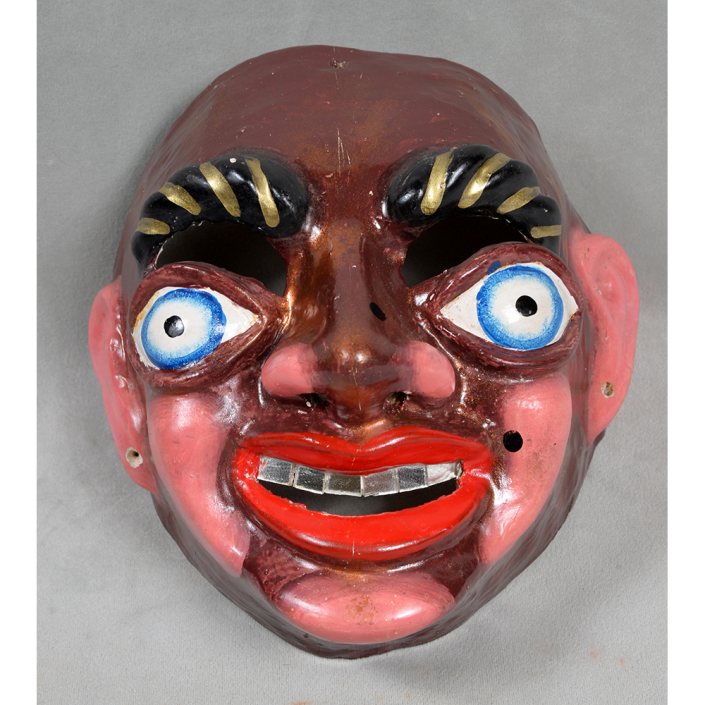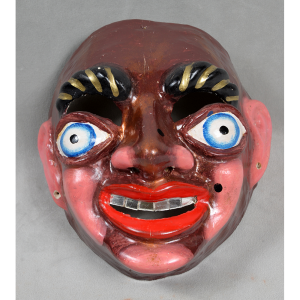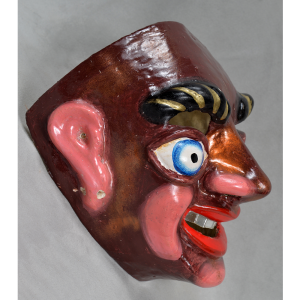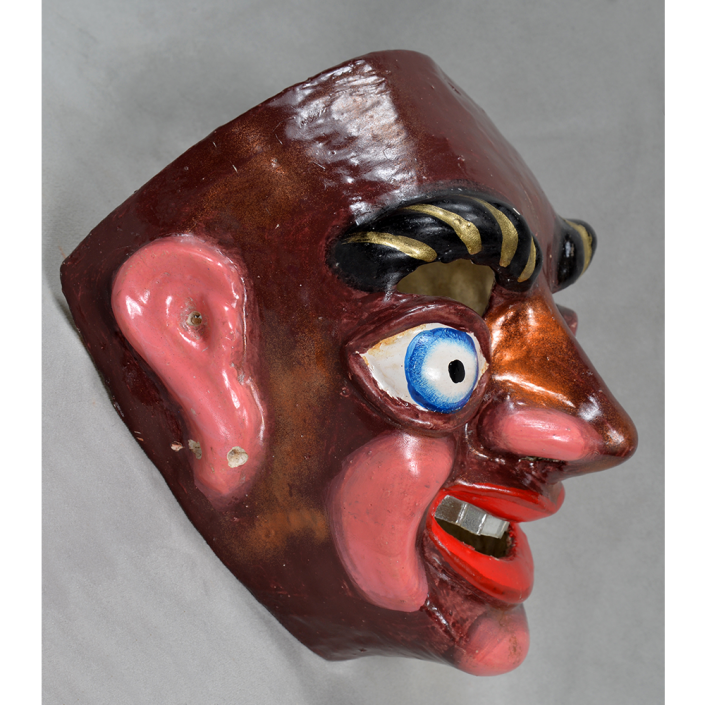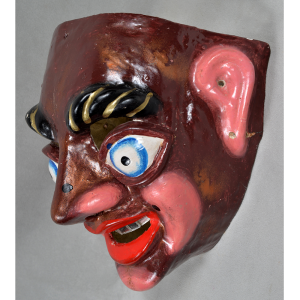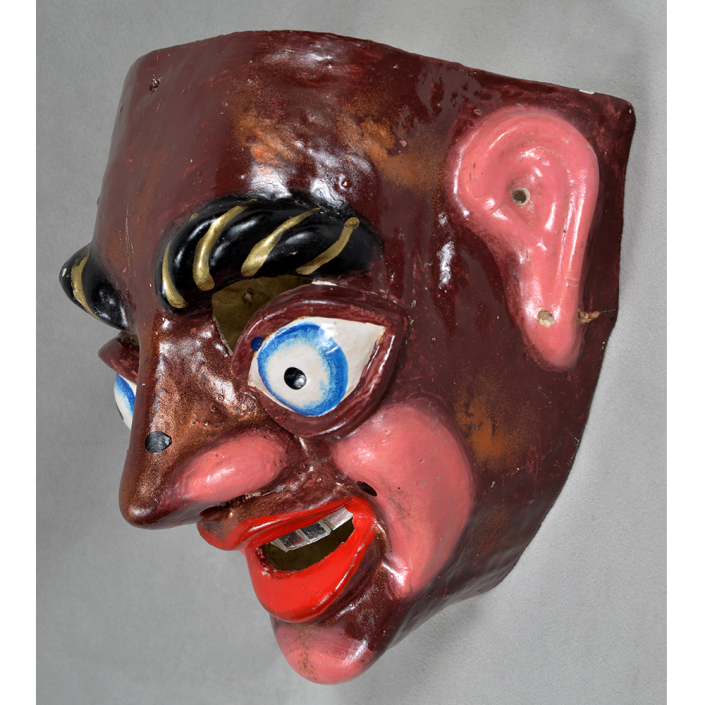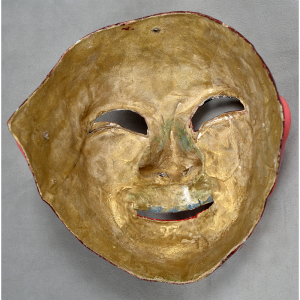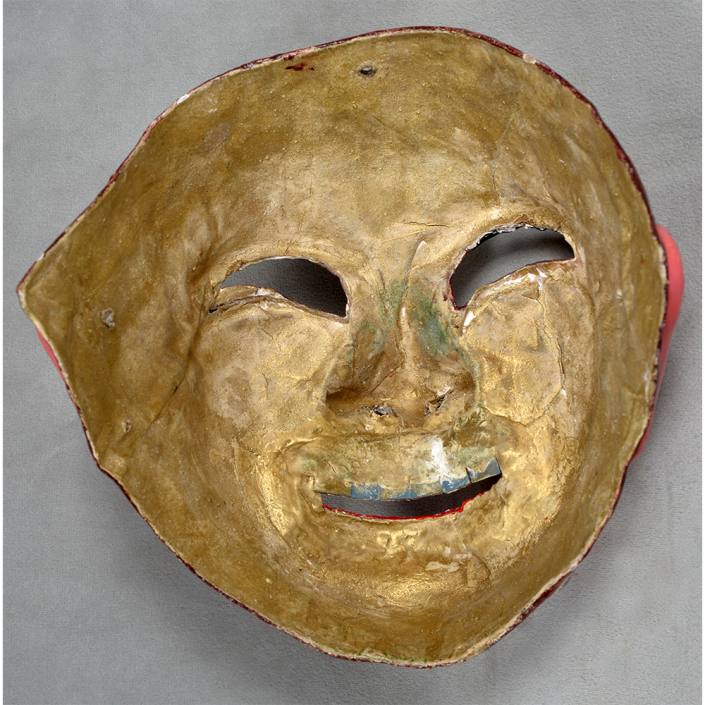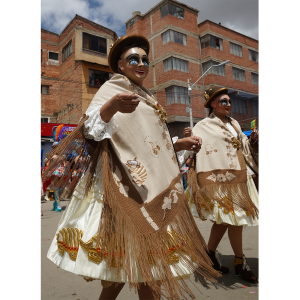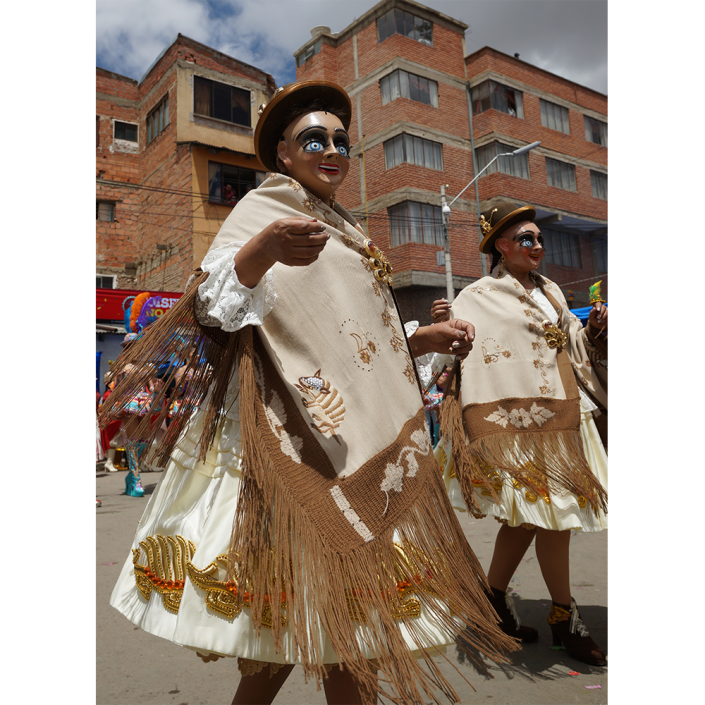TITLE: China Morena
TYPE: face mask
GENERAL REGION: Latin America
COUNTRY: Bolivia
SUBREGION: Oruro
ETHNICITY: Quechua and Aymara
DESCRIPTION: China Morena (brunette woman) mask
CATALOG ID: LABO017
MAKER: Unknown maker in Oruro
CEREMONY: Carnival (La Morenada)
AGE: 1960s
MAIN MATERIAL: linen covered with plaster
OTHER MATERIALS: mirrors; paint
The Morenada (Dance of the Moors) is an annual ceremony in several towns in the Altiplano region of Bolivia, Peru, and northern Chile, usually incorporated into Carnival. The dance includes both male and female Moors dancing in a group with whips, rattles, or scepters. A King of the Moors (Rey de Morenos) presides and coordinates the dance. The dance typically occurs in the course of a parade, with marching bands playing musical scores for the dancers. The precise origins of the Morenada are the subject of debate, with most specialists concluding that the dance was inspired by African slaves brought to Bolivia to work the mines or the subsequent integration of Africans into the Yungas community near La Paz. The morena wears a fancy version of the traditional Bolivian costume with the classic bowler hat.
This mask represents a china morena, or female Moor, made in the 1960s by the then-dominant method of laying linen cloth over a clay form, then applying plaster and allowing it to set. The mirrors used for teeth are intended to exaggerate the shininess of the morena‘s enamel and enhance her beauty. The actual dancer wearing the mask may be male or female.
For more on Bolivian masquerade, see Peter McFarren ed., Masks of the Bolivian Andes (La Paz: Editorial Quipus/Banco Mercantil SA, 1993).
